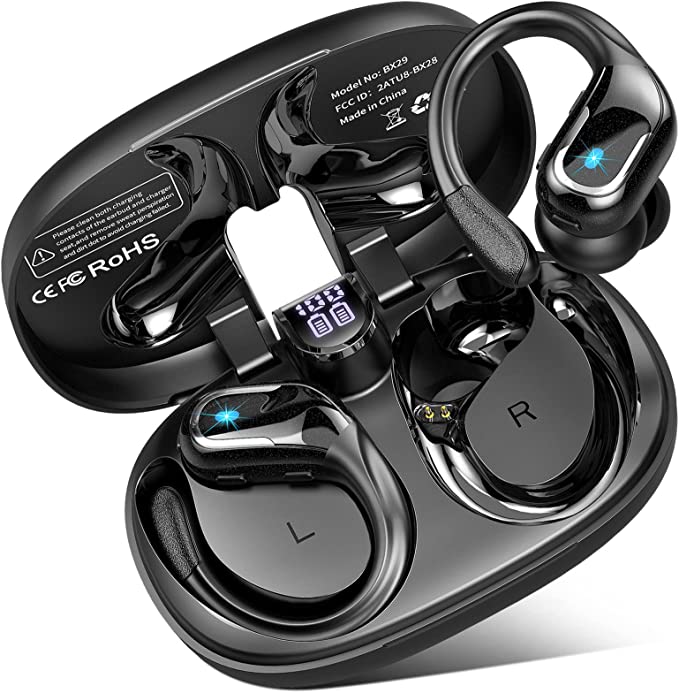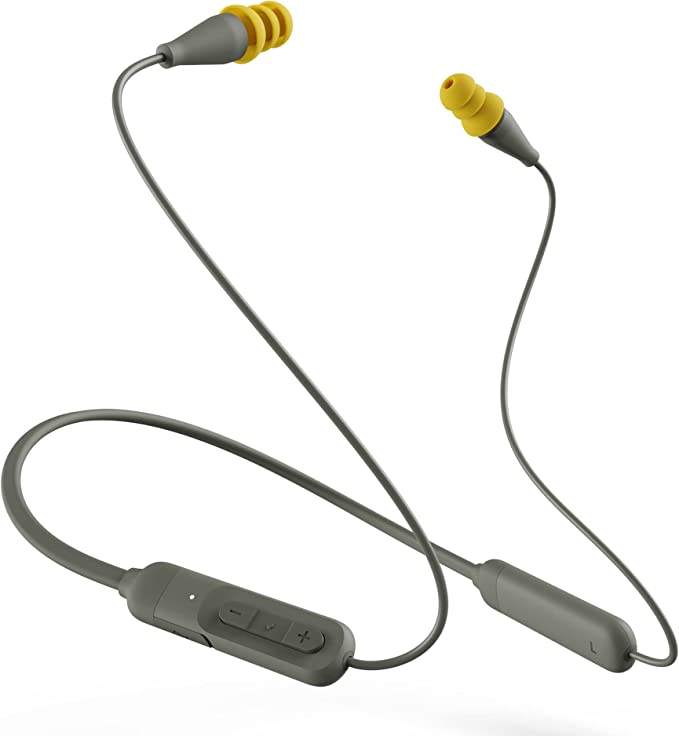Remember the sheer liberation when you first ditched the tangled mess of wired headphones? Wireless earbuds promised freedom – untethered movement, music on the go, seamless calls. Yet, reality sometimes bites back. Dropouts during your favorite song, the dreaded low-battery beep mid-workout, earbuds performing escape acts from your ears, or sounding clear as mud on a call from a busy street. The market is flooded with options, each boasting a dizzying array of technical terms. But what really makes a difference?
Let’s embark on a little tech exploration together. Think of me as your friendly guide, passionate about the science packed into everyday gadgets. We’ll peel back the layers, moving beyond the marketing hype to understand the engineering and scientific principles at play. Our specimen for today? The Ltinist BX29 wireless earphones. Not because they’re the fanciest or most expensive, but because they represent a common class of modern, accessible earbuds, integrating technologies many of us encounter daily. By understanding how these work, you’ll gain insight into the entire category. So, grab your curiosity, and let’s dive in!

The Invisible Handshake: Decoding Bluetooth 5.3 & Seamless Connections
It all starts with that invisible connection – Bluetooth. This short-range wireless technology has come a long way since its inception, evolving from a somewhat clunky way to connect headsets to a sophisticated protocol powering a vast ecosystem of devices. The BX29 utilizes Bluetooth 5.3. Now, version numbers can seem arbitrary, but each iteration typically brings refinements standardized by the Bluetooth Special Interest Group (SIG).
What does 5.3 potentially offer over its predecessors like 5.0 or 5.2? Generally, newer Bluetooth versions aim for enhanced stability and reliability. Think of it like upgrading your home Wi-Fi router – you’re hoping for fewer dropped connections and a smoother overall experience, especially in “noisy” wireless environments crowded with other signals (like gyms or busy offices). Bluetooth 5.3 incorporates features designed to be more efficient at navigating this interference, potentially leading to fewer audio stutters or disconnects. It also lays groundwork found in LE Audio (Low Energy Audio), a newer standard focused on better power efficiency and features like Auracast broadcast audio, although specific earbud implementations vary.
Beyond stability, there’s the sheer convenience. Remember the tedious pairing process of early Bluetooth devices? Modern standards, including 5.3, streamline this. The BX29 highlights “Auto Connection,” where the earbuds are designed to automatically reconnect to the last device they were paired with the moment you open the charging case lid. This isn’t magic; it’s clever protocol design enabling a quick “digital handshake” between remembered devices, saving you precious seconds and hassle. It’s these small refinements, built on foundational wireless principles, that contribute significantly to a smoother user experience.

Crafting Your Personal Soundscape: Drivers, Fidelity, and Clear Conversations
Alright, connection established. Now, how do these tiny things actually make sound? The heart of any speaker, including an earbud, is the driver. The BX29 uses 14.2 millimeter vibrating diaphragm drivers. Imagine a miniature version of a traditional loudspeaker cone. An electrical audio signal makes this thin diaphragm vibrate back and forth incredibly fast, pushing air and creating pressure waves – the very sound waves that travel down your ear canal and are interpreted by your brain as music, podcasts, or voices.
Does the driver size (14.2mm here) matter? It can. Generally speaking, a larger diaphragm has the potential to move more air, which can be beneficial for reproducing lower frequencies (bass) more effectively and potentially creating a “fuller” sound profile. However, driver size is just one piece of the puzzle; the driver’s material, magnet strength, internal acoustics of the earbud housing, and digital sound processing all play crucial roles. The goal, often described with terms like “HiFi Stereo” (High Fidelity), is to reproduce the original audio recording as accurately and clearly as possible, preserving the details and spatial separation (stereo imaging) intended by the artist or sound engineer.
Now, let’s talk about noise – a constant companion in modern life. The BX29 mentions a “Noise Cancelling Mic,” and this requires careful clarification. Firstly, the snug fit provided by the multiple ear tip sizes (S/M/L included) creates passive noise isolation. This is like putting your fingers in your ears – it physically blocks some outside sound from reaching your eardrum. It’s your first line of defense against ambient noise.
However, the “Noise Cancelling Mic” refers specifically to Environmental Noise Cancellation (ENC), a technology focused solely on improving the clarity of your voice during phone calls. Think of it this way: you’re on a call walking down a busy street. ENC uses microphones (often more than one) to listen to both your voice and the surrounding chaos (traffic, wind, chatter). Clever algorithms then analyze these signals, identify what’s your voice and what’s background noise, and actively filter out much of that unwanted noise before sending the signal to the person you’re talking to. It’s like having a digital bouncer for your microphone, ensuring your voice gets through clearly, even if your surroundings are loud.
Crucially, ENC is not the same as Active Noise Cancellation (ANC) for your listening experience. ANC works by generating “anti-noise” sound waves to cancel out ambient sounds around you, creating a quieter bubble for listening to music or just enjoying silence. The BX29, based on the description, focuses its noise-handling tech on making your calls clearer for the other person, leveraging ENC, rather than actively silencing the world around you while you listen to music. Understanding this distinction is key to setting the right expectations.

The Marathon Runner & Its Support Crew: Understanding the 90-Hour Power Ecosystem
One of the biggest leaps in wireless earbud technology has been battery life. Early models barely lasted a couple of hours. The BX29 boasts a headline figure of 90 hours of total playtime. How is this possible in such small devices? It’s not magic; it’s an ecosystem approach combined with advancements in battery technology.
The earbuds themselves likely use compact Lithium Polymer (Li-Poly) batteries, a type known for its relatively high energy density (storing a good amount of power for its size and weight). The BX29 claims a respectable 15 hours of playtime on a single charge from the earbuds alone. That’s enough for a full day of work or a long-haul flight.
But the real endurance comes from the charging case. This case isn’t just a storage box; it’s a portable power bank containing its own larger battery, specified here as 650mAh (milliampere-hours, a measure of charge capacity). When you pop the earbuds back into the case, they automatically start recharging from the case’s battery. With a 650mAh capacity, the case can provide roughly four additional full charges to the 15-hour earbuds (650mAh divided by the earbuds’ likely lower individual capacity, multiplied by efficiency factors, gets you in the ballpark of the claimed 90 hours total). Think of the earbuds as marathon runners, and the case as their dedicated support vehicle, carrying extra fuel to keep them going far beyond their initial energy reserves.
Adding to the practicality are features like the LED display, which shows the remaining charge percentage for both the case and often the individual earbuds. This simple feedback mechanism eliminates the guesswork and lets you know when it’s time to recharge the entire system. And recharging the case itself is done via USB-C, the modern, reversible standard connector found on most new phones and laptops, adding a layer of convenience and reducing cable clutter.

Built for Your Life’s Soundtrack: Ergonomics, Stability, and Weathering the Storm (IP7)
Beyond sound and power, how earbuds feel and hold up to daily life is critical. Ergonomics – the science of designing for human comfort and efficiency – plays a huge role. Many users, especially those with active lifestyles, struggle with traditional earbuds falling out. The BX29 tackles this with an over-ear hook design. This hook loops around the outside of your ear, providing a much more secure anchor point than relying solely on the in-ear fit. It helps distribute the earbud’s weight and resist the dislodging forces from running, jumping, or even just vigorous head movements.
Complementing the hooks are the three different sizes of soft silicone ear tips (S, M, L). Finding the right size is crucial for two reasons:
1. Comfort: A tip that’s too large or too small can cause pressure or irritation over time.
2. Acoustic Seal: A snug fit seals the ear canal, which is essential for optimal bass response and maximizing that passive noise isolation we discussed earlier.
Then there’s durability, especially against the elements. The BX29 features an IP7 waterproof rating. Let’s decode that “IP” code. IP stands for Ingress Protection. The first digit (missing here, sometimes shown as ‘X’) relates to protection against solid particles (like dust). The second digit relates to liquid protection. A ‘7’ rating means the device is protected against the effects of temporary immersion in fresh water up to 1 meter (about 3.3 feet) deep for up to 30 minutes. This doesn’t mean you should go swimming with them, but it does mean they should comfortably withstand heavy sweat during intense workouts, being caught in a rain shower, or even an accidental quick drop into a puddle or sink. This resilience is often aided by a nano-coating applied to internal components, offering an extra microscopic barrier against moisture damage. For anyone who exercises outdoors or just lives in an unpredictable climate, this level of water resistance offers significant peace of mind.
Taking Control: The Simple Confidence of Physical Buttons
In an era of sleek touch controls, the BX29 opts for traditional physical buttons. While touch controls can look futuristic, they sometimes lead to frustrating accidental activations – brushing against them while adjusting the fit might pause your music or skip a track. Physical buttons provide unmistakable tactile feedback – you feel the click, confirming your command.
This can be particularly beneficial during exercise when your hands might be sweaty, or when wearing gloves in colder weather. The buttons on the BX29 allow for managing the core functions: playing/pausing audio, skipping tracks, adjusting volume, answering or rejecting calls, and activating your phone’s native voice assistant (like Siri or Google Assistant). For users who prioritize reliable, deliberate control over gesture-based interaction, physical buttons remain a preferred choice.

Conclusion: Appreciating the Symphony of Science in Your Pocket
So, we’ve journeyed through the invisible world of Bluetooth signals, peeked inside the sound-making heart of the driver, demystified call clarity technology, understood the power ecosystem, decoded durability ratings, and considered the simple effectiveness of a physical button.
The Ltinist BX29, like countless other wireless earbuds, isn’t just a piece of plastic pumping out sound. It’s a miniature marvel of engineering, integrating principles from wireless communication, acoustics, materials science, power management, and ergonomics. Each feature, from the Bluetooth version to the shape of the ear hook, represents a series of design choices aimed at balancing performance, cost, and user experience.
Hopefully, this exploration has equipped you with a better understanding of the technology you use every day. The next time you pop in your wireless earbuds, perhaps you’ll appreciate the intricate dance of science and engineering that makes that seamless, long-lasting, resilient audio experience possible. Stay curious – there’s fascinating science hidden in plain sight all around us!




